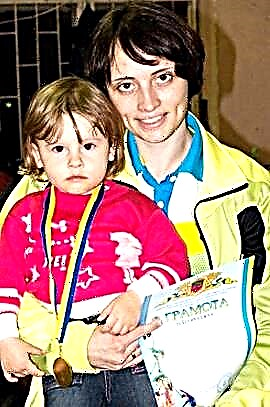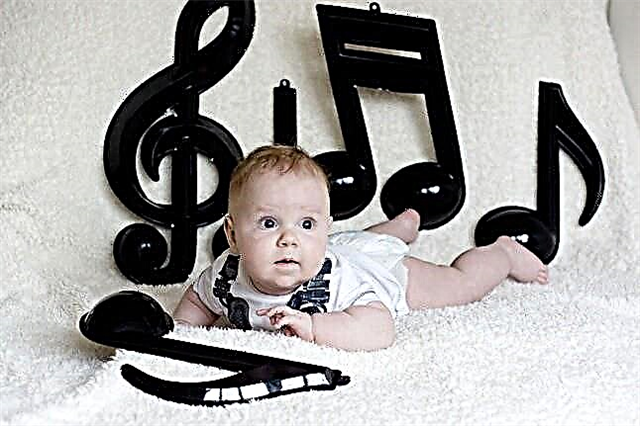
Burns in children (even minor ones) require mandatory parental intervention. After all, it depends on how quickly and competently first aid is provided whether the consequences of such an injury will come, how destructive they will be.

Unfortunately, even in our age, when information is "obtained" easily, many parents are still convinced that in case of a burn it is necessary to smear a child with baby cream or sour cream. You will learn about what first aid should be for a child at home by reading this article.
Algorithm of actions
There are no such children's burns in nature that would not require emergency assistance at all. Since these injuries are very common in childhood, children usually get them at home, it is simply necessary to know the rules of first aid. If the baby is burned, the algorithm of actions must be clear and strict.


Assessment of the condition and degree of injury
First you need to understand how large and deep the burn is. Determining the degree of damage is not so difficult; for this, parents do not need to be health workers.
There are four stages of such lesions:
- At the first, only the skin surface is affected. This is manifested by redness and slight swelling.
- In the second, edema and redness are complemented by the rapid formation of papules and vesicles. Blisters and blisters are usually filled with clear or cloudy serous fluid.

The third degree is characterized by deeper lesions. At grade 3A, the outer and partially middle layers of the skin are burnt. The wound looks dark, with scabs. At grade 3B, subcutaneous tissue is visible from the blackened wound - the only thing that has survived. At this stage, the child no longer feels pain, since pain receptors and nerve endings are damaged.
The fourth degree is the death of all layers of the skin, as well as darkening (and sometimes even charring) of the bones. There is no pain, but there is a high likelihood of developing burns and shock, life-threatening.


The area of the lesion also matters. It is clear that none of the parents in an emergency will measure it with a ruler, for this, doctors have a "universal cheat sheet". Each part of the body is approximately 9%. The exception is the genitals and perineum - this is 1%, butt is 18%. However, in small children, the proportions are different - their head and neck make up 21% of the body area.
If a child's arms and stomach are injured - this is 27% of the body, if only half of the arm is 4.5%, and if the head and stomach are already 30%, and if the bottom and legs are 36%.
If the burn is minor (stage 1-2), then an ambulance should be called if 10-15% of the body is affected. If the burn is 3-4 degrees, then if more than 5% of the body is affected.
Permitted actions
After assessing the condition and calling an ambulance, parents should take care to cool the injury site. For this, ice is not used, it is allowed to rinse the burn with running cool water - if the skin is not damaged, there are no ulcers and wounds. Then you can apply a diaper or a sheet moistened with cool water on the damaged area.

With an open wound, washing cannot be done, it is enough just to cover the damaged area with a dampened cotton or linen cloth, lay the child down and wait for the arrival of the "ambulance".
Prohibited actions
First aid should not harm the baby, so you cannot smear the burn with anything. Fatty substances are especially dangerous - baby cream, ointments, sour cream and butter:
- You cannot anesthetize a child, since this will complicate the medical diagnosis, because at 3 and 4 degrees of damage, the baby does not feel pain, and this is a diagnostic sign. If the baby tried to anesthetize the burn at 2-3 degrees, then the doctor may be mistaken with the diagnosis.

- You can not independently apply bandages, harnesses, and also transport the child, since it is impossible to assess all the risks at home, and the baby may have concomitant injuries - fractures, dislocations.
- You cannot try to treat the wound yourself., remove foreign objects from it, remove crusts or scabs. This increases the risk of infection, bleeding, and shock.
Providing first aid
If damaged by boiling water
Most often, such thermal burns are extensive in area, but not very deep. Usually everything is limited to stages 1-2. If the baby is burned by boiling water, you need to remove the soaked clothes from him and cool the affected area with cool water. At the first stage (if there is only redness, there are no other skin changes), you can anesthetize the burn site, for this it is allowed to use a spray with an analgesic effect - for example, lidocaine remedy.

With a large area (about 15%), you need to call a doctor, before his arrival, it is allowed to give the child only antipyretic, if the temperature rises - "Paracetamol" or "Ibuprofen».
If damaged by hot oil
Oil burns are always much deeper than hot water burns. This is due to the different boiling points of the oils. Typically, these injuries range from grade two to grade four. The most difficult thing in an emergency response to such an injury at home is to remove oil from the skin, and this must be done as quickly as possible.
To do this, you cannot wipe the lesion site. It is necessary to put the skin under water at about room temperature and rinse for a long time (at least 15-25 minutes) - without using soap. After that, you should call an "ambulance" if the degree is more than the second, and the affected area is more than 5%. It is worth refraining from the temptation to lubricate the burn with something and give the child anesthetic.

In no case should you use the people's advice: sprinkle salt on the burn. This can lead to very sad consequences.
If damaged by steam
Steam burns always have an impressive area, but shallow depth. The injured area should be cooled if the skin is intact. If necessary, you can use a spray with an analgesic effect. With a significant burn, you should call an ambulance and give the child antihistamines (Suprastin" or "Loratadin"), This will help reduce swelling.


If the respiratory tract is damaged
If a child receives a burn in the respiratory tract (for example, when inhaling steam during an incorrect inhalation), then, as a rule, such an injury is accompanied by burns to the face. Respiratory tract burns can also occur if volatile chemicals are inhaled.
First, you will need to provide access for fresh air - open all windows and vents, take the child out onto the balcony or outside. If the child is conscious, he should be seated in a reclining position. If the child is unconscious, he is placed on his side so that the head and shoulders are higher than the rest of the body.

If there is spontaneous breathing, no other measures are needed. If breathing is difficult, it is worth giving the child antihistamine in age dosage, this will help to avoid the development of severe internal edema of the respiratory system. If breathing is absent, artificial respiration should be given before the arrival of the doctor.
With chemical damage
If chemicals only come into contact with the skin, parents should thoroughly rinse the affected area with running water. It is very important that the water temperature is not high - hot water only enhances the destructive effect of some substances and compounds. All things should be removed from the child immediately, drops of chemical may remain on them.


After thorough water rinsing, an antidote should be prepared. If it is acid, then you need to rinse the skin with a solution of the most common soda at a concentration of 2% (just over two glasses of liquid and a teaspoon of baking soda), an alkaline burn is rinsed with a very weak acidic solution (suitable vinegar or lemon juice).


If the child receives burns of the mucous membranes or eyes, and also swallows a certain amount of poisonous liquid, you need to thoroughly rinse the eyes, mouth with running water, and also wash the stomach.
The arrival of an ambulance for such injuries is a prerequisite. The majority of chemical burns in children have a significant degree of severity. If a child has been burned by acid, you cannot remove the dry scab that forms on the surface almost immediately.

An alkaline burn is usually more severe and deep, with it the wound remains weeping, there is no dry crust. Do not apply bandages and ointments to the damaged area.
If damaged by iron or other hot objects
The traumatic effect should be eliminated as soon as possible, the iron should be removed. Rinsing with cool water should be carried out for at least 15 minutes, after which a damp cloth should be applied to the burn area. If the skin is intact, you can apply the foam "Panthenol».
The difficulty lies in the fact that when trying to take the iron away from the burn site, the tissues are often injured and peeled off. In this case, you do not need to smear the burn with anything. In case of injury of 2-3 degrees, the child is called in to the "ambulance" team; With severe pain, you can relieve the condition with the help of pain relieving sprays.

With sunburn
Emergency care begins with placing the child in the shade or bringing it indoors. You should undress it as much as possible, cool the skin with cool water, it is better to attach a damp sheet or diaper to them.

Drinking plenty of fluids is important. An "ambulance" should be called if the burns are visually 2-3 degrees, if the child is small (in this case, even with 1-2 degrees), and also if the baby has signs of heatstroke with clouding of consciousness.
Nothing can be smeared with fat cream or sour cream; if necessary, you can use the foam "Pentenol". For high fever, the child can be given antipyretics "Nurofen" or "Paracetamol". They have a slight analgesic effect.
Treatment
Treatment of minor burns is allowed at home; during therapy, you will need to take into account all the doctor's prescriptions. It is better to treat more serious injuries in a hospital setting. There are opportunities for qualified wound treatment with preliminary full anesthesia.
If necessary, the child will be prescribed antibiotics, antiseptics, intravenous infusions of nutrient solutions that will help the body replenish the loss of fluids. In severe cases, surgical intervention is indicated, as well as long-term rehabilitation.


Correctly provided first aid helps doctors immediately proceed to the second (main) stage of therapy. Parents' mistakes in providing first aid can significantly complicate both the diagnosis and the treatment process. The consequences of illiterate help are scars, heart and kidney problems, amputation.

What is a chemical burn and what are its symptoms? What kind of help can be provided on your own, and in what cases can you not do without a doctor? Doctor Komarovsky will answer all questions.



